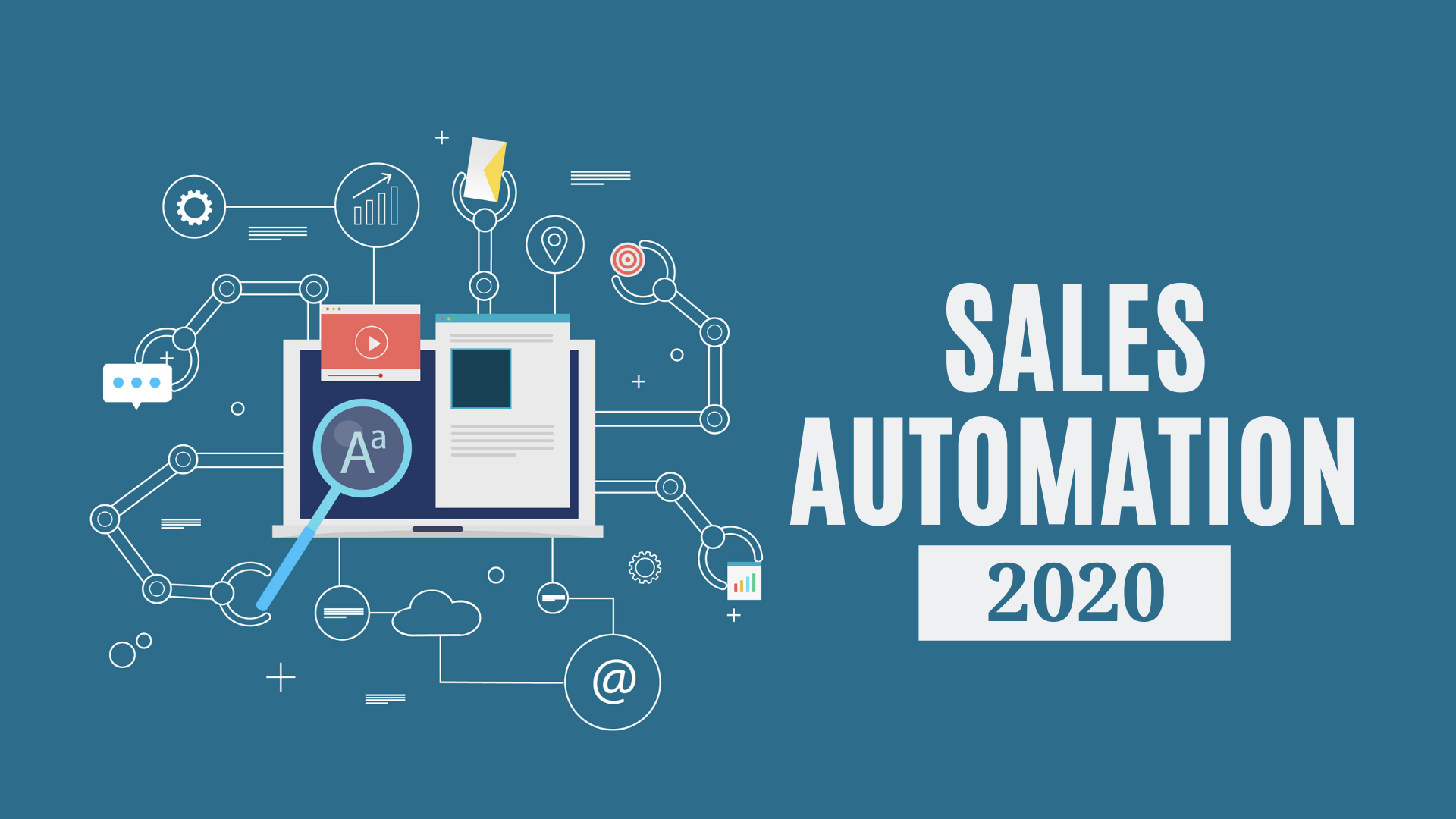According to a recent study reported in Forbes, sales representatives spend only a third of their time on actual sales activities. The rest is spent on administrative tasks, such as email, and social activities, including social media and networking with colleagues.
Less than 18% of their work time is spent using their CRM, and only 22.9% of reps have a time management system to keep them on track.
Not only does this mean that your team’s productivity is likely far lower than it could be, but these inefficiencies create opportunities for sales to fall through the cracks.
What is Sales Automation?
Sales automation refers to any software that automates the tasks in your sales pipeline, from lead generation to inbound marketing to cold calling.
These tools can take some of the busywork out of the hands of your sales team, freeing them up to focus on customer-facing tasks. Additionally, by integrating sales automation tools into your CRM, you can ensure that no leads get lost or forgotten.
From setting reminders to call back a prospect, to sending out email drip campaigns, a successful sales automation strategy will keep your prospects and customers engaged, without the need for a member of your sales team to facilitate every interaction.
Entrepreneur.com reports that sales automation can increase close rates, reduce the time it takes to sell, improve customer retention, boost revenue, and more. Not only that, but your sales software can keep working around the clock, ensuring that time zones and office hours don’t get in the way of customer satisfaction.

But you don’t want to rely too much on sales automation.
That said, it’s possible for companies to take sales automation a little too far. We’ve all been in the position of trying to contact a company by phone or email, only to spend a frustrating amount of time waiting for a human being to come on the line.
Your sales automation software should complement your sales reps, not replace them. As Inc puts it: “Yes, you can automate all your customer communications, but usually, that just creates an impersonal, alienating experience that, in the long term, actually hurts the overall customer experience.”
Your goal is to facilitate interactions, not put up a barrier between your customers and your sales team, or to overwhelm them with robotic messages. Be strategic about what tasks you automate, and which you leave in the hands of your human sales reps.
Still, there are some tasks that humans just can’t do as well as a machine, such as lead scoring and distribution. As artificial intelligence tools become more integral to the sales process, you can use these tools to boost your team’s computing power, while allowing your sales reps to guide the process and provide a human touch.
Don’t be caught without a sales automation CRM.
While sales automation tools can be used in isolation -- such as an AI chatbot or social media scheduler -- they’re most efficient when used alongside a CRM.
Some CRMs have sales automation tools built in, like the in-app sales dialer that comes built into OnCourse. But you can also integrate tools you already use into your CRM: for example, you can link your calendar so that meetings are automatically added to it.
A CRM does the hard work of making sure your sales automation strategies are in sync. It creates a profile for each lead or customer, so you know exactly where they are in the sales cycle, when you last interacted with them, and how best to follow up.
Without a CRM, your sales automation tools may cut down on your sales team’s to-do list, but they won’t make the process any more organized or efficient. With a CRM, you can keep your communications consistent from the initial point of contact, all the way through to support requests and future purchases or renewals.
Sales reps can get a lot out of sales automation.
A good sales automation strategy won’t put your sales reps out of a job: in fact, you’ll be making their jobs easier by streamlining their workflow, improving their ability to connect with customers, and helping them reach their sales quotas.
For the most part, you’ll be cutting down on the tedious busywork they have to do each day: manual data entry, call logging, scheduling, and more.
Sales automation makes their job less repetitive and more engaging, while reducing the inefficiencies that get in the way of closing a deal. It can also help them coordinate with other departments by sharing customer information in the same CRM.
Let’s take a look at some of the specific tasks that sales automation can help with:

Prospecting
In sales, the term prospecting refers to the process of finding and building a database of possible customers, and is often the first step in your sales pipeline.
It differs from lead generation in that leads typically come to you -- such as by filling out a webform -- while prospecting requires a more active search on the sales rep’s part.
For example, you might go prospecting on LinkedIn to find high-level decision-makers likely to buy your B2B product.
Sales automation tools can bring that information to you, turning your LinkedIn search criteria into a customized filter that sends prospects to you via email.
Instead of your sales reps manually crawling the web for prospects, they can close all their browser tabs and wait for a new list of prospects to arrive in their inbox.
Contact creation
Next, you can use sales automation tools to automatically create customer profiles for each new lead or prospect. Say goodbye to manual data entry and typos. Instead, pull customer data from webforms or even from scanned business cards.
Your CRM can track where each lead comes from, and which sales touch points they’ve interacted with. Have they attended an in-person event or an online webinar? Use this information to add context to your customer profiles so your sales reps know exactly who they’re interacting with, and so your lead scoring will be more effective.
Mark certain leads as “qualified,” or direct prospects into different workflows based on their previous actions or which triggers they’ve engaged with.
Enriching leads
Another great use for sales automation is lead enrichment, which refers to the process by which your sales team gathers information or intelligence on any given lead.
For example, your software can populate a prospect’s profile with information from their LinkedIn or Twitter accounts. Or, it can draw from publicly available data to provide you with information on a prospect’s company, job title, and more. This information can be invaluable when it’s time to contact your leads and make a personal connection.
Lead enrichment can also include correcting and verifying the data you already have. For example, you can send out a customer satisfaction survey to make sure that your customers’ contact details and communication preferences are all up-to-date.
Scheduling
Scheduling can be one of the most tedious tasks on a sales rep’s to-do list. Whether it’s juggling multiple calendars or playing phone tag with a prospect’s personal assistant, an inefficient scheduling system is a surefire way for prospects to fall through the cracks.
Engage your prospect while they’re still excited about your product by allowing them to book a callback or product demo on the spot. Simply share your available times with a prospect and allow them to pick one that works for them.
Automated scheduling tools are great for internal use too. You’ll find everything from AI chatbots that can schedule meetings with your coworkers, to reminder notifications built right into your CRM so you never forget a callback.
Sales dialers
Finally, one of the most important tools for automating your sales pipeline is the sales dialer, which takes human error and inefficiency out of the cold calling process. Some sales dialers are standalone platforms, while others are built right into your CRM.
Why are they so important? For one, preview dialers allow your sales reps to view the prospect’s customer profile before making a call, increasing the likelihood that they’ll form a personal connection and make a sale.
Second, sales dialers can place calls automatically, reducing the chances of a misdial. They can also automatically log your call records and update your CRM.
Finally, they cut down on the amount of time it takes to complete each call, increasing the amount of talk time your sales team has each day. Instead of waiting for the beep, your sales rep can simply drop a pre-recorded voicemail into their inbox.
Automation helps sales managers too.
Sales automation tools can make life easier for your sales reps, but they can be just as beneficial for sales managers too.
After all, parts of the sales manager’s job can be equally tedious, even if the tasks they complete are entirely different.
From creating reports to managing leads, here are a few ways that sales automation tools can help your sales managers do their jobs more effectively:
Reporting
As you compile your sales activities into a centralized CRM, your automated reporting tools can provide you with a birds’-eye view of your sales team’s activities.
You can view daily metrics such as the number of calls made, or more complex sales forecasts based on your current sales figures. If you have a remote sales team, your reports can include data on how many miles they covered or meetings they had.
In the past, sales managers had to keep track of their team’s progress by entering data into Excel spreadsheets. Now, you can have these reports automatically emailed to you or your sales reps at the end of each day or week, reminding you how much progress you’ve made towards your sales quotas and how much further you have to go.
Lead rotation
Another way that managers can use sales automation software is for lead distribution and rotation. This is the process by which managers decide which leads to assign to each sales rep, a process that can be time-consuming when done individually.
When you automate lead distribution, you cut down on the time that your sales reps spend waiting for leads, and you free yourself up to focus on other tasks -- such as coaching your reps through sales calls.
Lead management software can also ensure that each lead is assigned to the right sales rep. Whether you assign leads based on their quality, region, or other criteria, sales automation software can take the guesswork out of lead rotation and pair an appropriate member of your sales team with each lead.
Lead scoring
Finally, sales automation software can also streamline your lead scoring process. This is the system by which you prioritize leads and call each one at the right time.
Lead scoring is less important if you don’t have a large database of leads, but having a way to rank them becomes especially important as your business grows. That way, you aren’t wasting time calling up low-quality leads who are unlikely to make a purchase.
Your software can use demographic and behavioral data to score your leads and predict which ones are most likely to make a purchase. You can decide which metrics are most important to measure, and segment your list accordingly.
As your leads engage with marketing emails and other touchpoints, they’ll gain more points and be ranked higher up on your list. Once they’re determined to be “qualified,” your sales automation system will prompt a sales rep to engage with them.

Get the most out of your sales automation.
There are so many ways to use sales automation tools that we’ve only just scratched the surface. Of course, the best tools for your sales team will depend on whether you prioritize cold calls, inbound marketing, or other sales strategies.
The best way to get the most out of your sales automation tools is to use them along with a comprehensive CRM like OnCourse.
Many of the tools we’ve looked at here are either built into OnCourse, or can be used alongside OnCourse as a customized integration.
Once you’ve gathered all of your data in one place and set up a streamlined workflow, each tool can build on the next until you have an efficient automated system.
To get the most out of your sales automation software, reach out to OnCourse today to request a demo and find out how a CRM can boost sales for your business!

